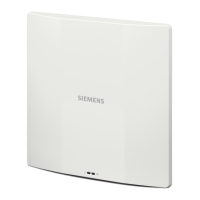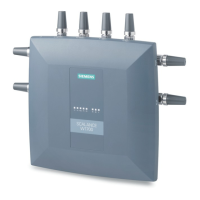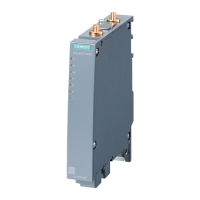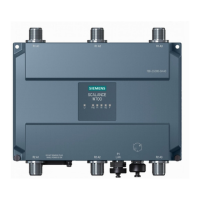AP-VPN Deployment
20.2 Configuring AP and Controller for AP-VPN Operations
SCALANCE W1750D UI
Configuration Manual, 02/2018, C79000-G8976-C451-02
333
For more information on configuring DHCP profiles, see Configuring DHCP Scopes
(Page 281).
Note
A Centralized, L2 or Distributed, L2 VLAN or s
ubnet cannot be used to serve APs in a
hierarchical mode of deployment. Ensure that the physical IP of the APs connecting to the
master AP in hierarchical mode of deployment is not on a VLAN or subnet that is in
Centralized, L2 or Distributed, L2 mode of operation. For information on hierarchical mode of
deployment, see
Understanding Hierarchical Deployment (Page 159).
Configuring an SSID or Wired Port
For a client to connect to the AP-VPN network, an SSID or wired port profile on an AP must
be configured with appropriate AP-VPN mode of operation. The VLAN configuration in an
SSID or wired port profile determines whether an SSID or wired port is configured for the AP-
VPN operations.
To configure an SSID or wired port for a specific AP-VPN mode, the VLAN ID defined in the
SSID or wired port profile must match the VLAN ID defined in the DHCP profile
configuration. If the VLAN assignment for an SSID or wired port profile is set to VC assigned,
custom, or a static VLAN ID that does not match the VLAN ID configured in the DHCP
profiles, the AP-VPN operations are affected. For example, if a local DHCP profile is
configured with a VLAN ID of 200, the VLAN configuration on the SSID must be set to a
static VLAN ID 200.
Note
Ensure that the VLAN assignment for an SSID or wired port profile is not set to default as the
VPN tunnel is not supported on the default VLAN.
For information on enabling dynamic RADIUS proxy, see Configuring Dynamic RADIUS
Proxy Parameters (Page 216).
Configuring Enterprise Domains
By default, all
the DNS requests from a client are forwarded to the client's DNS server. In a typical AP
deployment without VPN configuration, client DNS requests are resolved by the DNS server
of clients. For the AP-VPN scenario, the enterprise domain settings on the AP are used to
determine how client DNS requests are routed. For information on how to configure
enterprise domains, see Configuring Enterprise Domains (Page 334).

